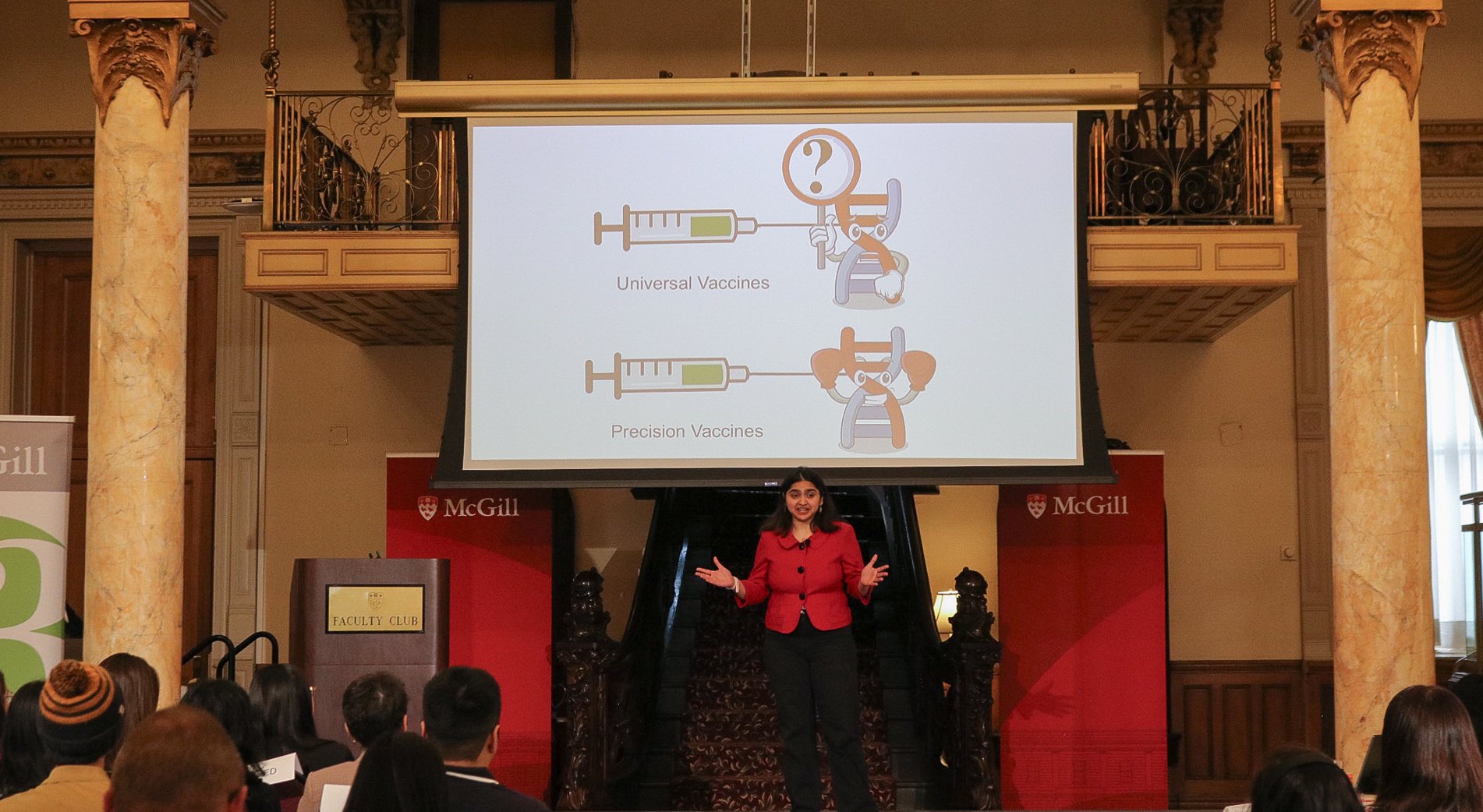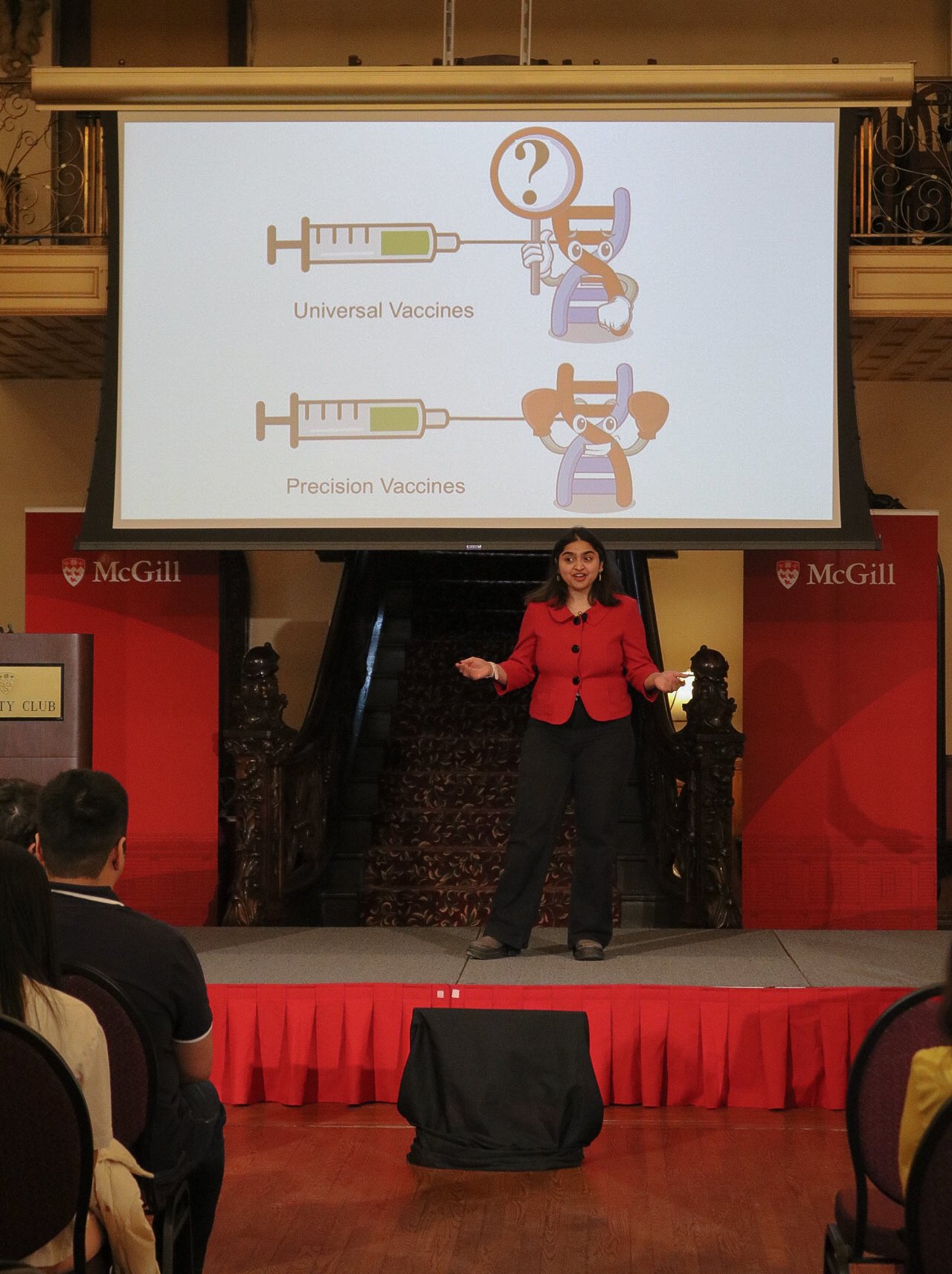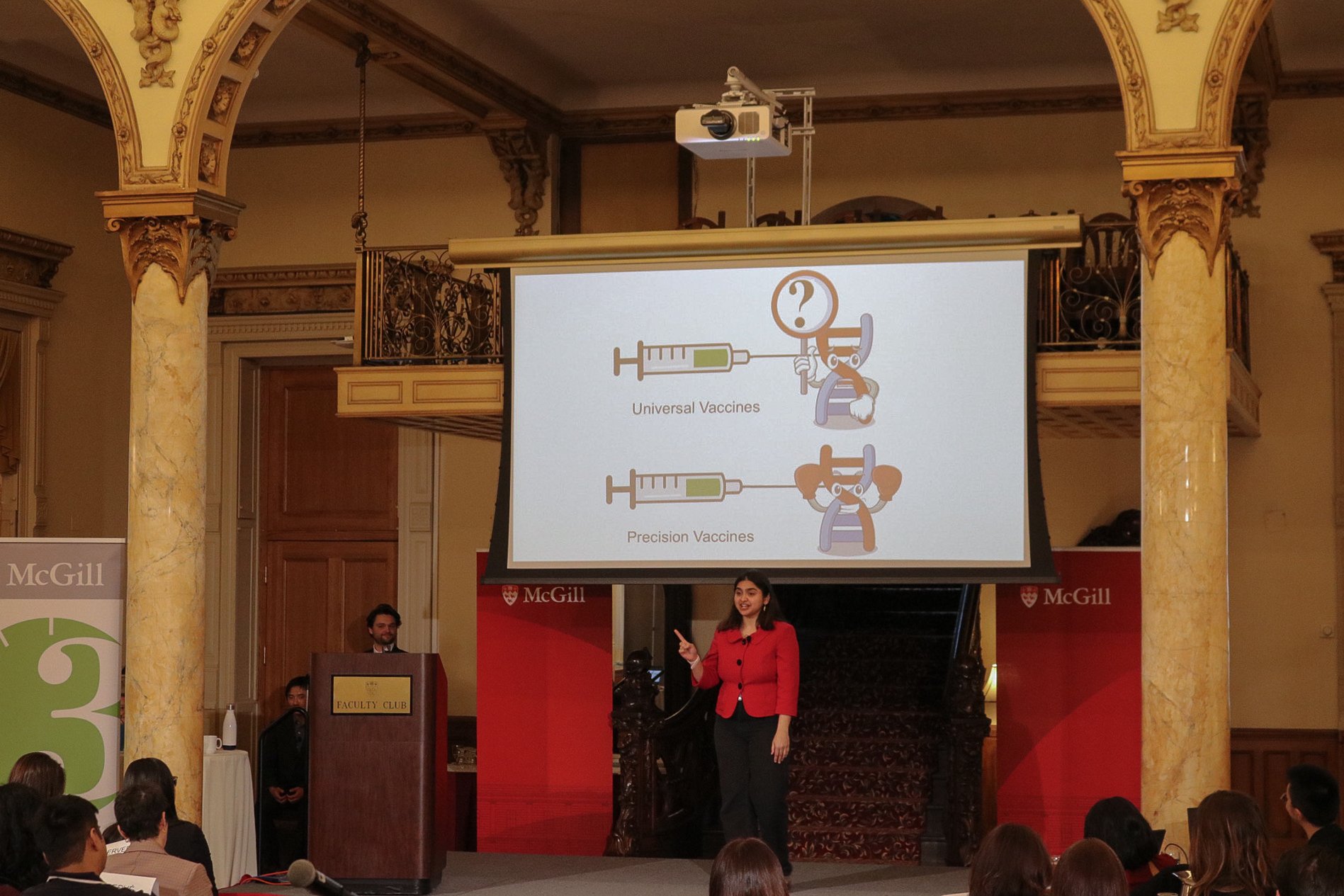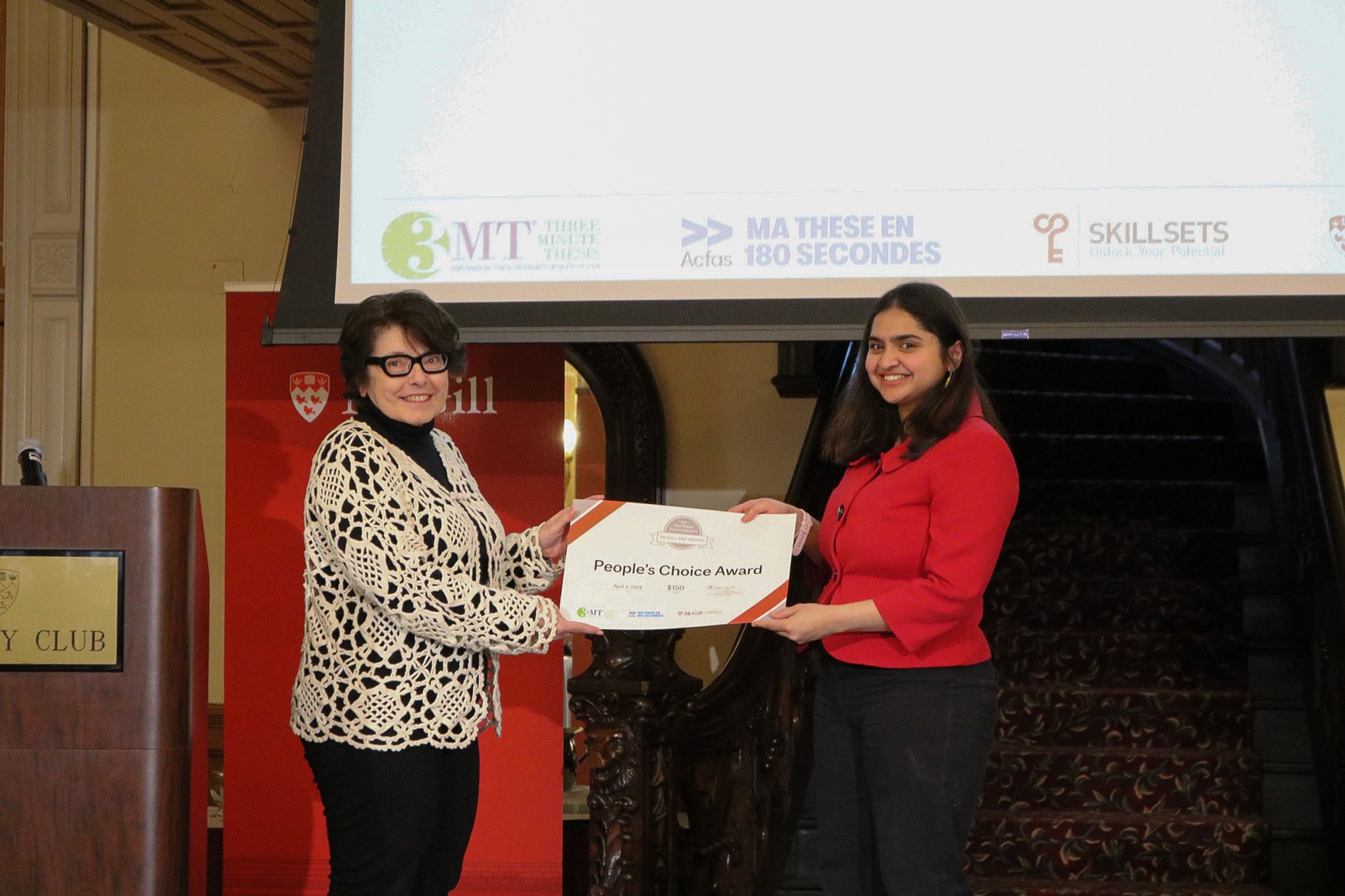The CERC team is very proud to announce a CERC student, Shamika Shenoy, won the People’s Choice at the McGill 3MT (3 Minute Thesis) Final Competition on April 3rd, 2024. Shamika is a first-year Ph.D. student in Human Genetics who joined the Cuella Martin Lab and the CERC team in September 2023.
With a mind brimming with questions about the human body’s intricate workings, she embarked on a quest to decode the secrets of our genetic code and its impact on human health. At Cuella Martin Lab, Shamika delves to understand genes involved in the DNA damage response pathways, particularly in cell cycle regulation, breast cancer development and our immune system’s adaptability.
If you want to know more, you will find below an abstract of Shamika’s thesis and the full event replay on Youtube.
Defining common and context-specific protein sequences in the repair of double-strand breaks via non-homologous end-joining.
Safeguarding genomic integrity is paramount for maintaining cellular homeostasis. To achieve this, cells have evolved a complex network of tightly interconnected pathways collectively known as the DNA damage response (DDR). The DDR is a guardian for detecting and repairing a wide array of DNA lesions, including the double-strand breaks (DSBs). Upon sensing a DSB, a cascade of signalling events is initiated to mark the lesion site and recruit the necessary repair machinery. Notably, non-homologous end joining (NHEJ) machinery predominantly repairs DSBs in non-dividing cells and those in the G1 phase of the cell cycle.
Additionally, NHEJ plays a crucial role in the programmed assembly of V(D)J gene segments in B- and T-cells and immunoglobulin class switch recombination in B-cells. The diverse nature of DSBs from blunt to staggered ends and in different contexts makes it crucial to identify these multifunctional NHEJ protein sequences involved in the repair. While extensive structure-function analyses of these genes have been conducted, only a limited number of separation-of-function (SOF) mutations have been identified to date. This knowledge gap is particularly prominent in newly discovered NHEJ factors and in proteins with expansive multidomain architectures. In this study, we propose a novel approach that harnesses the power of in situ deep mutagenesis, using CRISPR-dependent base editors, to unravel the structure-function relationships of NHEJ proteins. By systematically probing these proteins, we aim to define the common and context-specific protein features that govern DSB repair. Our findings promise to shed new light on the intricacies of the DDR, providing insights that could have far-reaching implications for therapeutic interventions aimed at preserving genomic integrity and combating diseases associated with DNA damage.
Photo credits: Genevieve Quinn.





